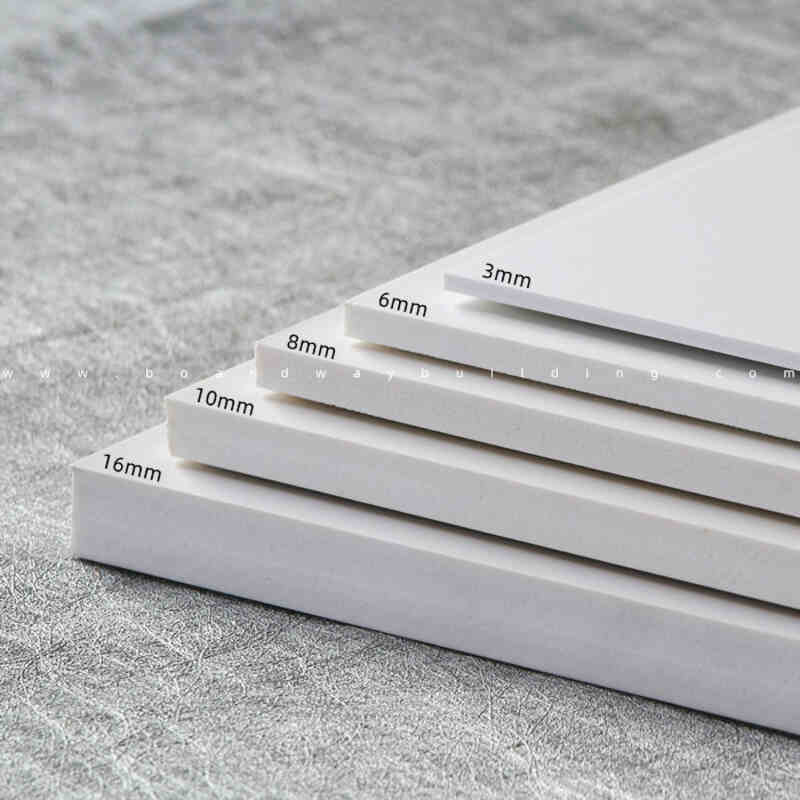PVC Foam Board has become a popular material choice in modern construction and interior design, especially for home and building projects. Its versatility, durability, and aesthetic appeal make it suitable for a wide range of indoor applications. However, understanding both its advantages and potential risks is essential for making informed decisions about its use. This article provides a comprehensive overview of PVC Board Surabaya for indoor applications, offering insights and practical advice for professionals in the home and building industries.
What is PVC Foam Board?
PVC Foam Board is a lightweight yet rigid material made from polyvinyl chloride (PVC). It is manufactured through a foaming process that creates a smooth, flat surface with a consistent cellular structure. Available in various thicknesses and sizes, it is widely used for signage, cabinetry, wall cladding, and decorative panels.
Its closed-cell composition makes it resistant to moisture, chemicals, and corrosion, making it an attractive option for indoor use. The material is easy to cut, shape, and install, offering flexibility for design and construction professionals.
Benefits of Using PVC Foam Board Indoors
1. Lightweight and Easy to Handle
Compared to traditional materials like plywood or MDF, PVC Foam Board is easier to transport, cut, and install, reducing labor time and effort on site. This makes it ideal for ceiling panels, partition walls, and furniture components.
2. Moisture and Chemical Resistance
Indoor environments like kitchens, bathrooms, or laundry rooms often experience high humidity levels. PVC Foam Board’s closed-cell structure prevents water absorption, making it highly resistant to moisture damage, warping, or mold growth. Its chemical resistance also makes it suitable for laboratory surfaces and clean rooms.
3. Smooth, Paintable Surface
PVC Foam Board offers a smooth, uniform surface that can be easily painted, laminated, or printed on. This makes it a popular choice for decorative wall panels, false ceilings, and custom interior features. It accepts various finishes, including UV coatings, for enhanced aesthetics and durability.
4. Insulation Properties
Due to its cellular composition, PVC Foam Board provides decent thermal and sound insulation properties. When used for interior partitions or ceiling panels, it can contribute to improved energy efficiency and acoustic comfort within a building.
5. Durability and Low Maintenance
PVC Foam Board is non-corrosive, termite-proof, and resistant to most common indoor pollutants. It does not require frequent maintenance, making it a cost-effective choice for long-term indoor installations such as cabinetry, wardrobes, and shelving systems.
Common Indoor Applications of PVC Foam Board
Wall Cladding and Decorative Panels: Ideal for creating modern, sleek wall finishes.
Modular Kitchens and Bathrooms: Moisture resistance makes it perfect for cabinetry and countertops.
False Ceilings and Partitions: Lightweight and easy to install in suspended ceiling systems.
Interior Signage and Displays: Smooth surface suitable for printing and graphics.
Furniture Components: Widely used in custom-built wardrobes, shelves, and office furniture.
Potential Risks and Considerations
While PVC Foam Board offers numerous benefits, it is essential to be aware of potential risks and limitations when considering it for indoor use.
1. Fire Safety Concerns
PVC is inherently flammable, and although many foam boards are treated with fire-retardant chemicals, they may still release toxic gases like hydrogen chloride when exposed to high heat or flames. It is crucial to verify the fire rating and ensure proper installation in accordance with building codes and fire safety regulations.
2. Environmental Impact
PVC production and disposal raise environmental concerns due to the use of chlorine and the release of harmful compounds. While some manufacturers offer recyclable PVC foam boards, it’s important to consider sustainability factors and opt for eco-friendly options where possible.
3. Surface Susceptibility
Despite its durability, PVC Foam Board surfaces can be prone to scratches and dents if not handled properly. Protective coatings or laminates can enhance surface strength for high-traffic areas.
4. Expansion and Contraction
PVC Foam Board can expand or contract with temperature changes, potentially causing warping or misalignment in large panels. Proper installation techniques, such as leaving expansion gaps, can mitigate this issue.
Best Practices for Using PVC Foam Board Indoors
Check for Certification: Choose boards with fire-retardant certifications and eco-friendly labels.
Use Protective Finishes: Apply laminates or UV coatings to enhance surface durability.
Professional Installation: Ensure expansion gaps and proper anchoring to prevent warping.
Regular Cleaning: Use non-abrasive cleaners to maintain the material’s appearance without damaging the surface.
Conclusion
PVC Foam Board offers a practical, versatile, and cost-effective solution for a wide range of indoor applications in the home and building sector. Its lightweight nature, moisture resistance, and ease of customization make it an appealing choice for designers and contractors alike. However, understanding potential risks, especially regarding fire safety and environmental impact, is crucial for responsible usage.
By following best practices gstarboard and selecting high-quality materials, professionals can maximize the benefits of PVC Foam Board while minimizing potential downsides. As demand for modern, functional interiors continues to grow, PVC Foam Board remains a valuable material worth considering for various indoor projects.

